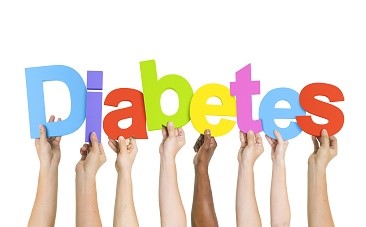Since 2004, the FDA has approved more than 30 major diabetes drugs. Not one of those drugs has ever been proven to save a single life.
1 There is also NO proof they prevent heart attacks or complications like blindness or amputations. These drugs do not treat diabetes. They only target blood sugar levels. But here's the thing… High blood sugar levels are not the same as diabetes. They are a sign of diabetes — but they are not the disease. Very few people ever die of high blood sugar levels. But an overwhelming 80% of diabetics die of heart disease. And Big Pharma's drugs do nothing for them. In a recent study, a team of researchers looked at nine classes of diabetes drugs — including insulin. They reviewed 301 randomized clinical trials. The data covered almost 120,000 patients with type 2 diabetes. They compared the drugs to a placebo. The results were stunning. There was absolutely no increase in survival rates for people who took the drugs. The drugs completely failed to prevent heart attacks or strokes. They also failed to reduce all-cause mortality for these patients.
2 Diabetes drugs are dangerous. They come with a long list of nasty side effects. They cause cardiovascular reactions, flu-like symptoms, and dizziness. They're linked to muscle pain, stomach pain, diarrhea and anemia. About 100,000 people every year end up in the emergency room with dangerously low blood sugar from taking these drugs. And many diabetics are taking not one, but two and even three of these drugs at the same time. Instead of saving lives, this multiple-drug plan increases death rates. A study in The New England Journal of Medicine proved it. They found intense efforts to lower blood sugar with drugs resulted in a 22% higher rate of death from any cause. Deaths from heart disease increased by 35%.3 In my practice, I do more than help my patients manage their diabetes — I help them reverse it. I also help them prevent diabetes in the first place by using natural ways to help stabilize blood sugar levels. Here are some simple strategies you can use:
1. Take This Little-Known Insulin Mineral. Vanadium is a crucial trace mineral but most people have never heard of it. It mimics the action of insulin. It helps move glucose from the blood into the cells where it can be used as energy. Vanadium also inhibits the absorption of glucose from the gut. That helps reduce damaging blood sugar and insulin spikes. In one study, people with diabetes took vanadium supplements daily. After just three weeks, average blood sugar levels dropped by 10%.4 Take 500 mcg three times daily. Just don't exceed 10 mg in a day.
2. Enjoy this tropical fruit. Traditional healers in Bali showed me how guava controls blood sugar and diabetes when you eat it without the skins. The stems, leaves and fruit block the digestion of carbohydrates. So you have fewer sugar spikes and need less insulin. That makes you less likely to develop insulin resistance. You can find fresh guava in local markets. Also look for guava tea made from the dried leaves at your local health food store or online.
3. Try this blood sugar herb. Berberine is a plant nutrient. It's found in medicinal herbs like barberry and goldenseal. In the 1980s, Chinese doctors discovered it can normalize blood sugar levels. Berberine works by decreasing insulin resistance. It also increases your body's ability to break down sugars inside cells, and decreases sugar production in the liver. To lower blood sugar levels, take one 500 mg capsule of berberine two to three times a day with food.
4. Let the sun shine. Low vitamin D3 levels are directly linked to insulin resistance, pre-diabetes and full-blown type 2 diabetes. In fact, one study revealed that even a minor D3 deficiency can increase your risk of diabetes by 91%.5 That's important to know, because most people have a vitamin D deficiency. You can get plenty of vitamin D3 from just 10 minutes a day in the midday sun. But it's crucial that you expose parts of your body that are usually covered up. That's the only way your body can produce enough vitamin D. Your face normally gets a lot of sun exposure, so put on a hat while you soak up the rays. You can also get vitamin D from foods like salmon, mackerel, tuna, sardines, pastured eggs and grass-fed beef, liver and dairy.

